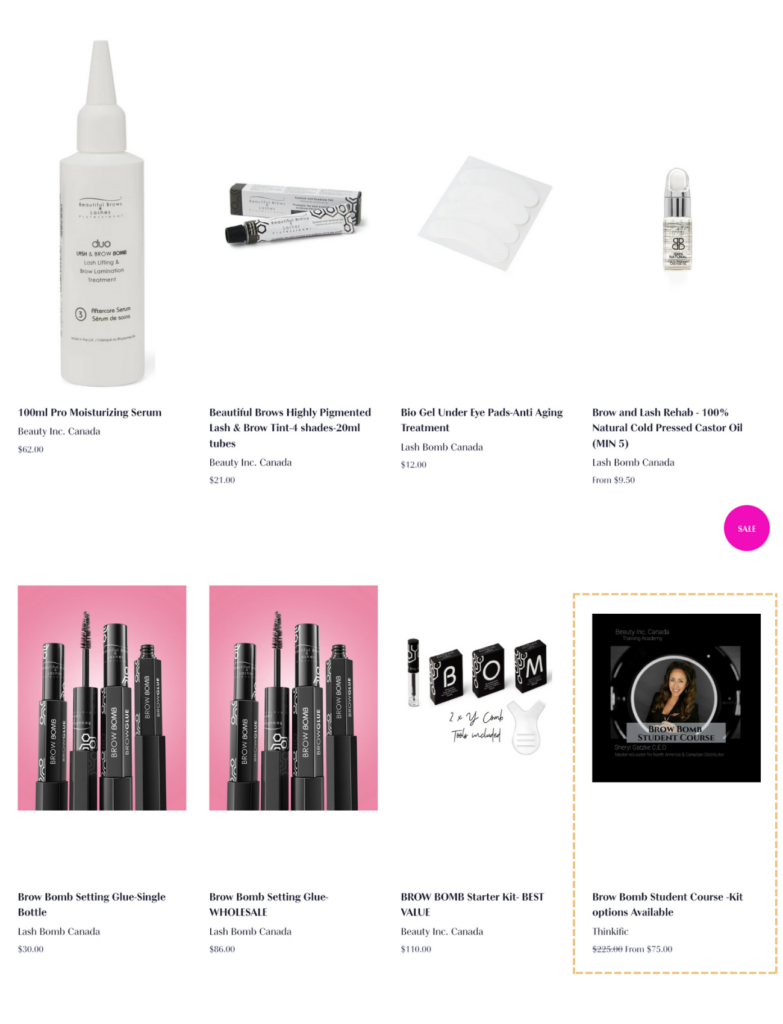With over a million businesses on the platform, Shopify has seen a trend of merchants incorporating digital products and online courses into their stores.
In this article, we’ll discuss the various formats and benefits of incorporating online courses into a Shopify store from a video workshop that course creator Gwen Elliot hosted for Thinkific.
Gwen walks through the benefits for Shopify sellers to create an online course, and the first steps to creating a course to sell alongside a physical product. You can view the workshop here, or continue reading!
Skip ahead here:
- Different Course Formats for Shopify Merchants
- Benefits of Incorporating Online Courses into Shopify Stores
- Creating an Online Course for Your Shopify Store
Different Course Formats for Shopify Merchants
There are many different types of digital products that you can sell from your Shopify store. Here are a few course-related products that Gwen shared:
- Free Email Challenges – Email challenges can last 3, 5, or 7 days and teach the audience a specific topic for free. Merchants can market their courses or products within the email challenge.
- Live Workshop Format – Allows merchants to test their content with the audience before committing to a full course. Merchants can sell products related to the workshop topic alongside the course.
- Subject Matter Expert Courses – Merchants can teach on their specific area of expertise and sell related products within the course.
Related: How to Sell Digital Products on Amazon
Benefits of Incorporating Online Courses into Shopify Stores
- New Revenue Stream – Online courses can provide a consistent income stream throughout the year, even during seasonal fluctuations.
- Branding and Customer Onboarding – Offering courses alongside products helps build a connection with customers and educates them on proper product usage. If you sell a product that requires setup, or maintenance, a course might be the perfect way to ensure the success of those customers.
- Higher Profit Margins – Digital courses have lower overhead costs and are scalable, allowing for better profit margins.
- Recurring Sales Potential – Online courses can lead to recurring sales, especially when combined with membership courses or new product launches.
Related: How To Launch A Wildly Successful Membership Website (+Guide)
Creating an Online Course for Your Shopify Store
We cover the steps and strategies to create an online course more thoroughly, but here are a few pointers Gwen offered.
1. Develop a Course Outline
Understand your ideal learner and create the course outline. Here are a few resources to help you outline your course:
- How To Create An Effective Course Outline (+Template)
- The Ultimate List of Free Online Course Lesson Plan Templates
2. Follow the Understanding by Design Framework
Gwen shared this advice on how to approach creating your offering using a modified Understanding by Design framework:
I have a five step process that I recommend you use to create your course outline. So this is adapted from the understanding by design framework.Gwen Elliot
A few key points about this process:
- Identify desired results, goals, and success measurements.
- Design the learning experience and refine the course outline.
- Enhance the course outline with additional materials like worksheets and cheat sheets.
Related: 10 Instructional Design Models For Creating A Winning Online Course
3. Align your physical and digital products: Examples
Consider how to package your physical and digital products together. Here are a few examples of Shopify merchants selling online courses next to their other products on Shopify.
Sheryl Gatzke from Beaty Inc. Canada sells makeup courses alongside her beauty products.

Transformation Academy uses Shopify & Thinkific to sell coaching packages and self-paced courses together from one storefront.

The transactions for both these examples happen within Shopify, but the learning experience is hosted and fulfilled by Thinkific.
4. Integrating Thinkific with your Shopify Store (or another course hosting platform)
Using the Thinkific app, you can add your Thinkific courses directly to any of your Shopify sales channels (e.g. your online store, via buy button, or Instagram).
“I wasn’t going to build a whole new website just to integrate courses. It was really important for me that it was able to just be slid right into Shopify,”Sheryl Gatzke, Beauty Inc.
Once you have Shopify and Thinkific connected, when customers purchase your courses through any of your channels, the courses will be automatically fulfilled and accessed through Thinkific’s online course platform.
Related:
- Thinkific Support Documentation on our integration with Shopify.
- Learn how Beauty Inc. Canada sells digital products and physical products in tandem from their Shopify store.
Ready to start selling courses on Shopify?
Incorporating online courses into a Shopify store offers merchants various benefits, including new revenue streams, better branding, and higher profit margins.
Merchants can choose from different course formats, such as email challenges or live workshops, depending on their preferences and audience needs. To create an online course, merchants should develop a course outline and follow a structured framework to design the learning experience. By offering valuable and engaging courses, Shopify merchants can create a deeper connection with their customers and drive sales growth.
Launch your online learning product for free
Use Thinkific to create, market, and sell online courses, communities, and memberships — all from a single platform.

This article was automatically generated by AI from the original Youtube Video and was verified/enhanced by a human.







